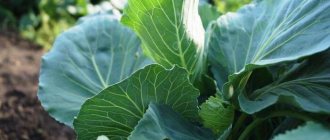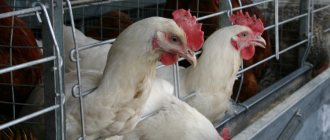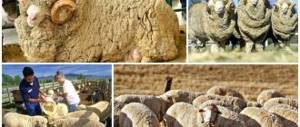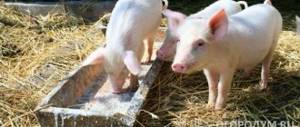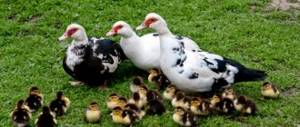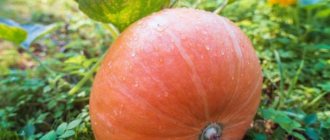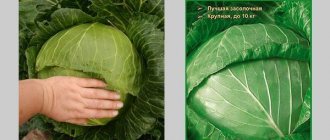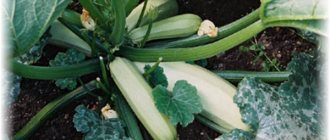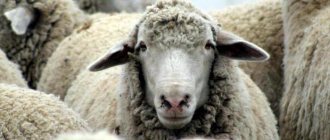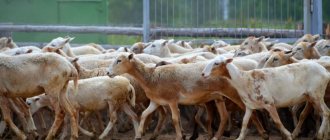Many gardeners like to plant various varieties of cabbage on their plots. This is a relatively unpretentious garden crop that does not require constant care.
Currently, not only the usual white cabbage beauty is planted in their beds, but also exotic kohlrabi, broccoli, cauliflower and Peking kohlrabi. Since breeders from all over the world are constantly working on growing new species that can grow in cold regions, this has become quite possible.
Therefore, white cabbage varieties are planted to be eaten throughout the entire period until the next harvest and for pickling. And the more exotic ones are planted to enjoy various delicacies.
The varieties of this crop differ in terms of ripening, regions of growth, and also in their taste characteristics. This is what our article today will be about.
Description of varieties and types of cabbage
Cabbage is a vegetable crop that does not require particularly complex cultivation techniques. And as already noted, it tolerates negative environmental factors quite easily. At the same time, it produces quite rich harvests. Taking into account the ripening time, the following groups are distinguished:
- Early ripening – from 70 to 115 days
- Mid-season - from 115 to 150 days
- Late ripening – over 150 days
Varieties include cabbage, leaf, cauliflower, savoy, kohlrabi and Brussels sprouts. In general, there are about 90 different species.
This crop is biennial. In the first year, the formation and growth of leaves and heads of cabbage occurs. And in order to get seeds, the crop must grow in the second year.
Cauliflower is an exception in this case.
It should be noted that ordinary varieties can be grown to obtain seeds. And there are hybrids that are marked along with the name - the F1 mark. They are not suitable for collecting and storing seed material, and each time they need to be purchased anew.
The advantage of hybrids is large yields, which ripen earlier than usual and are better stored. However, their leaves may not be as soft and juicy, and many believe that hybrids are inferior in taste to non-hybrids. But they are less susceptible to adverse weather conditions and pests.
Let's look at which varieties and hybrids are the best in a particular classification and variety.
How to grow cabbage
Growing mid-season and late-season white cabbage has its own characteristics.
Firstly, the soil is cultivated in the spring when it reaches normal ripeness in your garden plot and you can dig (plow) to the full depth of a shovel. Secondly, you can start making ridges and ridges on excessively moist soils.
Typically, the width of the surface of the ridges when growing white cabbage should be in the range of 100-120 cm, the height 18-25 cm or more, depending on the degree of soil moisture. When making ridges, you should not compact the soil too much along the sides to avoid excessive loss of moisture through evaporation.
Photo of mid-season cabbage variety Megaton
Refill the soil with organic fertilizers if they were not applied in the fall or during spring digging. It is advisable to apply mineral fertilizers at this time: ammonium nitrate or urea, superphosphate, potassium salt. It is better to apply organic fertilizers when planting seedlings in a hole (500 grams of humus each).
After digging, the soil is leveled with a rake and the rows are marked. To grow mid- or late-ripening cabbage, make row spacing of 60-70 cm. The distance in the row for medium varieties is 40-50 cm, for late white cabbage - 50-70 cm.
The planting technique is the same as for early ripening cabbage.
After planting, the soil must be regularly loosened, the plants must be hilled up two or three times, watered, fed, weeded, and pests and diseases must be controlled.
The first loosening of row spacing is carried out on the day of planting mid-season or late white cabbage, subsequent ones - as needed, but preferably after each rain or watering. The depth of loosening should increase as the plants grow: the first loosening is by 5-8 cm, subsequently up to 12 cm.
The first hilling of grown white cabbage is carried out approximately 20-25 days after planting. On waterlogged soils it is necessary to hill up in two directions.
Hilling up is especially effective both in controlling weeds in the rows and in forming additional roots on the stump (stem). When hilling, loose soil is poured under the rosette of leaves, which suppresses the growth of weeds and promotes the awakening of roots, which enhance the nutrition and supply of moisture to the plants. Before. Closing leaves in rows requires up to 2-3 hillings.
It is necessary to constantly monitor the soil moisture status.
The photo shows mid-season cabbage variety Rinda
Leaves should not be allowed to wilt due to lack of moisture. Watering time is determined as follows. Take a handful of earth in the top layer of soil at a depth of 20-25 cm, squeeze it tightly in the palm of your hand and throw the lump onto a dense path from a height of 90-100 cm. If the lump of earth crumbles, then there is not enough moisture in the soil and watering is necessary.
Another method: if the soil taken from a depth of 20 cm does not roll into a ball or forms into a weak ball that disintegrates when pressed, then watering is required.
Typically, in the central regions, late-season white cabbage (as well as mid-season) cabbage is watered 3-4 times, in the northwestern regions - 1-4 times, depending on the growing conditions.
After each watering, the soil must be loosened to destroy the soil crust and conserve moisture.
The photo shows mid-season white cabbage variety Nadezhda
Mid-ripening and late-ripening cabbage varieties are characterized by an increased requirement for nitrogen and potassium during their cultivation.
The first feeding is carried out during the period of increased leaf growth and the beginning of rosette formation. Add 15-25 g/m² of active substance nitrogen, 15-20 g/m² phosphorus and 15-25 g/m² potassium on the 15-20th day after planting the seedlings. Fertilizers are applied to a depth of 8-10 cm within a radius of 8-10 cm from the plant.
The second feeding is carried out during the period of the beginning of the formation of heads of cabbage in the middle of the row spacing, to a depth of 10-15 cm with the addition of: 20-30 g/m² nitrogen, 20-25 g/m² phosphorus and 20-30 g/m² potassium.
Photo of mid-late ripening cabbage variety Fundaxi
Liquid fertilizing is usually carried out in dry weather. 20-25 g of ammonium nitrate, 30-40 g of superphosphate, 20-25 g of potassium chloride are dissolved in 10 liters of water. One watering can (10 liters) waters 18-20 plants.
Organic feeding of late and mid-season cabbage is given with a solution of mullein (1 part to 7 parts water) or bird droppings (1:15) with a glass of ash added to 10 liters of solution.
Dry fertilizers when growing white cabbage are applied when the soil is moist, scattering them along the rows, after which they are immediately incorporated into the soil with a hoe during loosening or hilling.
Read also: The best winter varieties of pears
The photo shows a hybrid form of late white cabbage Centurion F 1
Cabbage has many pests. From the very first day of planting, it is necessary to carefully monitor their appearance, inspecting the leaves of the plants daily. Even with a single appearance of pests on heads of mid-season and late cabbage, measures must be immediately taken to destroy them.
The best varieties of early and earliest cabbage
Early cabbage is grown using the seedling method. To get an early harvest, many sow it for seedlings at the end of January - February, the deadline is the beginning of March. We have already discussed how to plant it so that it grows strong and healthy in one of our articles.
In this section we will consider the main varieties with a description of the characteristics and some photographs.
White cabbage
- "June". It matures in 90 days; after 60-65 days, you can remove the heads of cabbage, which weigh about 2 kg. Tolerates frost down to 5 degrees. But it is susceptible to cracking. It has a beautiful appearance - in cross section the upper leaves are green, slightly yellowish inside. It has a high content of vitamin B and other beneficial vitamins and microelements.
- "Parel F1" requires about 95 days, and in ideal conditions the harvest can be expected 56 days after planting in open ground. Very similar to “Iyunskaya”, however, the weight of the heads of cabbage is slightly less, only up to 1.5 kg. Rich in vitamin C. It has a short shelf life, but may not lose its appearance and taste for up to two weeks, provided it is in the garden. Developed by Dutch breeders and has an excellent slightly sweet taste.
- “Golden Hectare” grows in no more than 100 days. Seed germination reaches 90%. Weight varies from 2 to 3 kg. Good for salads and dishes that use fresh vegetables. But despite all the advantages, it does not lie well and is sensitive to the soil - it does not like heterogeneous and acidic soil.
Among the early varieties, it is also worth highlighting “Kazachok”, “Ditmarskaya rannyaya”, “Dita”, “Copenhagen Market”, “Transfer”, “Dumas”, “Malachite”, “Zarya”, as well as “Rinda”, “Tobia”, “ Zantoriya", "Express", "Taurus".
Broccoli
- "Batavia F1" is an early hybrid. After planting 30-day-old seedlings, they have time to ripen in 60-68 days. The heads are quite large and weigh over 1 kg, and are well divided into inflorescences. It does not crack and easily tolerates growing in particularly poor conditions. It can also be planted without seedlings; for this, it is planted in the southern regions directly into the ground in the third decade of April.
- “Vitaminnaya” grows in 72-90 days. The fruits are not large - up to 300 g maximum. If you don’t get the harvest right, they become soft and crumbly.
- For Curly Head, it takes about 90 days from the time the seeds germinate until the harvest ripens. The head is medium, weighing up to 500 grams. Used for long-term storage, unpretentious.
It is also worth noting cabbage such as “Yunga F1”, “Linda”, “Green Magic F1”, “Vyarus”, “Iperator”, “Fiesta”, “Sebastian”, “Russian size”, “Romanesco”. The last three varieties have a head weight of over 1.5 kg.
Colored
- “Express MS” is a productive variety that produces fruits in 100-104 days. Heads weighing up to 480 g. When planted densely, it is not inferior in taste and yield to its closest competitors. But it is susceptible to pest damage and has low cold resistance. Can be transported, but storage conditions are not long-term.
- “Snow Globe” matures after planting 40-day-old seedlings in 60-65 days. The fruit itself weighs up to 1.2 kg. Similar to Express, but has strong immunity to pests and diseases. It also tolerates bad weather conditions well. From 1 sq. m. you can harvest up to 2 kg of crop.
- “Dachnitsa” has a longer ripening period – 80-100 days. Head up to 1 kg, containing a lot of vitamin C and glucose. Loves a loose fit and has the greatest shelf life. A special feature is that during the entire ripening period the leaves carefully cover the head, which allows you to obtain pure snow-white fruits.
Varieties of early cauliflower also include “Movir”, “Francoise”, “Yarik”, “Moscow Ultra”, “Garantiya”, Polar Star”, “Tsendis”. They all have approximately the same growing season and have good yields.
Savoy
- “Golden Early” usually requires 105-110 days from germination to obtain a good harvest. A head of cabbage weighing up to 800 g is resistant to cracking. Tolerates mild cold and drought well. Used fresh and boiled, and also as a filling for pies.
- "Nyusha" has gray-green leaves that make up a medium-density, pointed head, weighing up to 1 - 2 kg. Allows you to have a harvest of up to 3.3 kg per square meter. The variety is early, the growing season of which is only 55 - 60 days. Plant seedlings in the first ten days of March, plant in open ground in the first ten days of May. Harvest at the end of June or July.
You can also consider such early representatives of the Savoyard lace beauty - “Early Viennese”, “Komparsa”, “Jubilee”, “Mira”, “Moscow Lacemaker”, “Petrovna”.
Beijing
- “Richie F1” is a hybrid that ripens after seedlings are planted in the ground in about 40 days. Therefore, it is often sown immediately in open ground. Due to the special tenderness of lettuce leaves, it cannot be stored for long. The weight of heads of cabbage often reaches 2.5 kg.
- “Vesnyanka” after planting seedlings in the ground requires no more than 35 days to ripen. Not inclined to shoot. Contains a large amount of vitamin C, so it is great for salads. Not recommended for long-term storage.
Early representatives of the species also include “Cha cha”, “Yukki F1”, Manoko F1”, “Beijing broadleaf”.
Category "Early"
To choose a variety for your site, you need to study the description of the species. And plant only those that are suitable for the needs of the family. The best varieties of early cabbage:
- Malachite. Salad variety of culture. One head of cabbage weighs up to 2 kg. It tastes juicy and spreads its leaves widely. But despite this, the head is dense and hard. Frequent watering causes cabbage to grow quickly.
- Taurus. Hybrid variety. Weight reaches 6 kg. But this is subject to compliance with all agricultural technology requirements. Has immunity to many diseases.
- Zarya f The weight of the fork reaches 2 kg. It tastes great fresh and can be used in all salads. But it is not stored at all and is not consumed in canned form.
- Dumas f The heads of cabbage do not crack. The taste is excellent. Eating is standard for varieties of this category, only fresh. The forks tie perfectly even in dense plantings.
- Rinda f Suitable for preparing salads and eating fresh. Can be stored for 4 months, just need to be placed in a cool place. The density is medium, the taste is excellent.
- Cossack f Weighs up to 1.5 kg. There is no bitterness characteristic of plants. Does not crack and retains its presentation.
- June Weight 2.5 kg. It is important to remove them from the beds in time, otherwise the forks will crack and bloom.
Mid-season varieties with descriptions of characteristics
White cabbage
- “Moskovskaya late 9 and 15” have dense large heads of cabbage up to 5 kg. “Moskovskaya late 15” requires a neutral soil composition, and “Moskovskaya late 9” requires an acidic soil composition. When growing conditions are met, they produce a very bountiful harvest. Not used for storage, but great for pickling.
- Stone Head requires only 125 days to harvest. Heads of cabbage weighing up to 6 kg (from 1 square meter - up to 11 kg). It is resistant to cracking and tolerates both light frost and dry and hot summers. It is mainly used immediately for salads, but due to its long shelf life (until March) it can be stored for the winter.
It is worth considering such popular types as “Megaton”, “Atria”, “Merchant’s Wife”, “Sugar Loaf”, “Slava”, “Krasnodarskaya”. The best are also “Gift” and “Menza”. They are distinguished by their large head weight and high yield. Thus, “Menza” produces heads of cabbage weighing 9 kg.
Broccoli
- "Calabrese" is one of the frost-resistant representatives of broccoli. Head up to 400 grams.
- "Arcadia F1" ripens on the 110th day. The average weight is estimated at 450 grams. Ripens well even with very frequent planting and low temperatures.
- “Vitaminnaya” matures in 100 days. The head is standard green, weighs approximately 300 grams, and is of medium density.
Early varieties of broccoli also include “Fiesta”, “Lucky”, “Gnome”, “Fortuna”, “Atlantic”, “Genoa”, “Greenbelt”, “Gran Favorite”, “Compacta”, “Caesar”, Monton”
Colored
- “White Beauty” can produce up to 6 kg per 1 square meter. Heads of cabbage can be collected 65 days after planting. Heads up to 1.2 kg. Temperature changes, attacks by pests and diseases can greatly reduce its yield.
- The “white head” takes approximately 110 days to obtain a flattened head weighing up to 1.1 kg. Productivity up to 4.5 kg per 1 square meter. It is resistant to frost and has a high content of vitamin C and beneficial microelements, which is why it is popular in cooking, medicine, and cosmetology.
And you can also pay attention to such representatives as “Koza Dereza”, “Flora Blanca”, “Summer Resident”, “Parisian”, “Purple”.
And also colored beauties, such as the “Purple Ball”.
Savoy
- "Melissa" is a hybrid obtained specifically for autumn harvest. The heads of cabbage, flattened on the sides, are large, weighing up to 3 kg, with high density, resistant to cracking. It has dark green bubbly leaves with a mild pleasant taste. The harvest is harvested 120 days after emergence. The crop is not afraid of slight frosts and tolerates drought well.
- "Thaler" is similar to "Melissa", but with an even flatter head of slightly smaller size - up to 2 kg.
- "Tasmania" is particularly cold-resistant, but is demanding of high nitrogen content in the soil. The head of cabbage is round, weighing up to 1.5 kg.
“Vertu”, “Sfera F1”, “Kroma” have good characteristics and significant yields.
Beijing
- “Granat” has cylindrical heads weighing up to 2 kg. It takes 70-80 days to ripen. Unpretentious, with a stable harvest.
- “Anako” is very similar to “Pomegranate”, but it is stored longer and, at the same time, does not lose in taste and quality. It takes a little more than 70 days to grow. Resistant to fungal diseases, which is important for long-term storage of vegetables.
You can also include “Hydra” and “Glass” in this list.
Cabbage varieties for different regions
White cabbage grows well in all regions. But to get a large harvest with a minimum of effort for your plot, it is better to choose zoned varieties that are maximally adapted to the climatic conditions of a particular region.
For Ukraine and Southern Russia
Ukraine and southern Russia are characterized by hot, long summers with little precipitation, which has an extremely unfavorable effect on most varieties of moisture-loving and cold-resistant white cabbage. But especially for residents of regions with a similar climate, breeders have created forms that are highly resistant to high temperatures and lack of moisture.
Particularly popular among residents of Ukraine and the south of the Russian Federation are early and ultra-early varieties of cabbage, which manage to ripen before the hottest days. These include:
- Aigul;
- Derbent local improved;
- Nozomi;
- Flash;
- Legate;
- Parel;
- Dawn.
Mid-season and late varieties of white cabbage, resistant to climate conditions, are also grown in these regions, such as:
- Centurion;
- Potomac;
- Kharkov winter;
- Brigadier;
- Jeant;
- Quartet.
For central Russia and the Moscow region
For the middle zone and Moscow region, many varieties of white cabbage have been zoned. The following are especially popular among residents of this region:
- early: June;
- Cossack;
- Kilagreg;
- Pandion;
- Krautman;
- Megaton;
For the Urals and Siberia
In Siberia and the Urals, cold-resistant early and mid-season varieties that manage to ripen in a short summer are very popular. For example:
- June;
- Cossack;
- Express;
- Siberian 60;
- Transfer;
- Hope;
- Tobia;
- Tequila;
- Belorusskaya 455.
Video: harvesting early cabbage in the Middle Urals
Many late varieties in the conditions of Siberia and the Urals fail to form a large head of cabbage before the onset of cold weather. The following are free from this drawback:
- Dot;
- Aggressor;
- Amager 611 (not recommended for cultivation in Eastern Siberia);
- Valentina;
- Krautkaiser;
- Extra;
- Kolobok.
For Belarus
White cabbage really likes the humid and not too hot climate of Belarus. The State Register of Breeding Achievements of this country includes more than 100 varieties of this crop, including:
- Number one Gribovsky 147;
- Cossack;
- Parel;
- Adema;
- Tequila;
- Barton;
- Kilaton;
- Belarusskaya 85;
- Glory 1305;
- Amager 611;
- Crewmont.
Mid-late and late varieties and hybrids
White cabbage
- “Aggressor F1” is a hybrid, bred by Dutch breeders, valued for its extreme unpretentiousness to soil and weather. The shelf life reaches up to six months. The weight of one head of cabbage is up to 5 kg and does not require additional care. The growing season lasts up to 120 days; in warm climates it can be sown directly into open ground.
- "Amager" produces a ripe head of cabbage, weighing from 2.5 to 4 kg, on the 120-150th day from the moment of germination. It is stored until April and used for transportation, while the appearance and all the taste are completely preserved. There is also high resistance to cracking and good frost tolerance. But it is subject to a number of unfavorable factors.
Among the best representatives of this culture with excellent characteristics, it is also worth noting such as “Valentina”, “Kolobok”, “Moscow Late”, “Mara”, “ Aros F1″, “Crumont F1”, “Geneva F1”. The latter, as the name suggests, are hybrids.
Broccoli
- Atlantic matures in 130 days. It grows up to half a meter in height and produces dense fruits weighing up to 400 grams.
- “Grinia” is a well-known variety that ripens in 130-140 days. It grows up to 60 cm, with medium fruits, up to 300 grams.
- "Monterey F1" is a special hybrid with incredibly large heads, weighing up to 2 kg.
Other late hybrids and varieties “Agassi F1”, “Ironman F1”, “Parthenon F1”, “Belstar”, “Marathon”, “Continental”.
Colored
- “Amerigo F1” is a hybrid with milky white heads, on average up to 2.5 kg. Ripening time is about 2.5 months. At the same time, from one square meter you can get up to 6-8 kg. It is not susceptible to various kinds of diseases, but is demanding of care.
- It’s not for nothing that “Cortes F1” is one of the most productive hybrids - at least 5 kg of cabbage is harvested per square meter. Head up to 3 kg, very juicy. Ripens in 75 days, stores well, but is demanding on soil and fertilizers.
This also includes “Agniya”, “Clara’s Corals”, “Green Snowdrift”.
Savoy
- “Ovasa F1” is a hybrid of Dutch selection that matures in 140 days after planting seedlings in open ground. Resistant to temperature changes and diseases.
- “Uralochka” needs about 95-100 days to obtain a round head of cabbage up to 2.2 kg, resistant to cracking and with storage for up to 3 months.
“Alaska”, “Cosima”, “Stilon F1”, “Virosa F”, “Nadia F1” - they are also worth adding to the list for consideration.
Beijing
- “Monument” is an extremely high-yielding representative of its species. The heads of cabbage are dense and large, weighing up to 4 kg. The harvest period from emergence is 70 days.
- “Autumn Beauty” is a hybrid suitable for growing in the second half of summer. The head is elongated, not too dense, weighing up to 2.5 kg.
- "Nika" is a hybrid that is especially resistant to shooting. Compared to other species, the leaf blades are highly wrinkled. Head weight up to 3 kg.
It can be consumed not only fresh, but also fermented.
Category "Average"
Among the medium varieties of white cabbage, there are also favorites. According to the assessments of summer residents, the best varieties of medium ripening have been identified.
- Cabbage Bravo f1. The forks are dense and tasty and do not crack. Excellent transportability.
- Dobrovodskaya. Juicy and sweet variety. With proper agricultural technology, the weight of one head is 8 kg. The average weight is about 5 kg. Can be stored for up to 5 months. Excellent resistance to diseases and pests.
- Menza cabbage f The size of cabbage heads of this variety reaches 9 kg. But some summer residents claim that it is capable of creating a record-breaking miracle. Delighting a patient gardener weighing 15 kg. It is important not to be lazy and carry out fertilizing and other necessary agricultural practices on time. Has no disadvantages.
See also
How can you treat cabbage against fleas at homeRead
- Siberian. Excellent taste. Suitable for fermentation and pickling, consumed fresh. The head of cabbage weighs about 3 kg, but if all requirements are properly met, the weight can be increased. Sibiryachka cabbage has excellent product characteristics and can be stored for a long time.
- Present. There is a spicy taste. It can be distinguished from other varieties by its characteristic waxy coating. Approximate weight 4 kg. Very often this variety of white cabbage is used for winter preparations. Retains excellent shape even when transported over long distances.
- Vestri cabbage f1 A variety of white cabbage resistant to fusarium and fusarium wilt. The weight of the heads ranges from 4 to 8 kg. Versatile, but has a short shelf life
- Krautman f Forks weighing up to 4.5 kg. They are resistant to cracking; this indicator is not affected by either rainy weather or long periods of time in the garden. Able to retain its presentation for 4 months, but subject to proper storage.
- Tobia cabbage. The fork weighs 5 kg. The species is excellent for mechanical cleaning. Universal in use. Keeps for several months.
- Merchant's wife. Weight up to 3 kg. the taste is excellent. Suitable for pickling. It lasts for several months without losing its presentation.
- Vyuga cabbage. Gardeners like it because it does not crack. The taste characteristics are excellent. Can be stored for up to 4 months. Not susceptible to common crop diseases.
The best winter varieties and hybrids of all types of cabbage
The best varieties with large heads of cabbage
- "Snow White" has bluish leaves that form a dense head of up to 3.5-4.5 kg, depending on care. It tastes good and can be used for anything. Ripening period is up to 150 days. The harvest can be harvested up to 7.5 kg from 1 square meter. It is stored for a long time and tolerates transportation well. Head weight up to 4 kg.
- Moscow late has a head weighing 8 - 10 kg.
- Kolobok – up to 5 kg.
- Megaton – 3 – 4 kg.
- Aggressor – 2.5 – 3 kg.
- Mara – 4 – 4.5 kg.
- Amager - up to 3.5 kg.
- Wintering - up to 3.5 kg.
- Langedijker - 3.5 - 4.5 kg.
- Kharkov winter - 3 - 4 kg.
Late cabbage with small and small heads of cabbage
- “Aros F1” is one of the mid-season hybrids related to winter cabbage (130-140 days). Produces dense heads of cabbage up to 1.9 kg with light green leaves, which become saturated after they have been left for a while. In general, it can be stored for up to 9 months. Also, resistant to the most common diseases.
- “Ilona F1” is a popular hybrid, the harvest of which is harvested 4 months after germination.
Does not shoot, does not form cracks, is not susceptible to diseases. The head of cabbage weighs 1.6-2.3 kg.
Most Popular
The cabbage variety is selected not only taking into account the winter and climatic characteristics of the region, but also according to its intended purpose . Each plant has its own mineral and vitamin composition, but it is also influenced by agricultural conditions and soil type.
To make it easier to choose the appropriate option, the varietal assortment is divided into groups united by a common characteristic.
The best late varieties of cabbage for long-term storage
Aggressor is a mid-late hybrid developed by breeders from Holland. It is characterized by minimal care and resistance to fusarium and thrips.
The growing season lasts up to 120 days ; seeds can be sown directly in an open garden bed. A mature vegetable weighs 3-5 kg. Shelf life and processing – up to 5 months .
Aggressor
Amager is a late cabbage with a ripening period of 120-147 days . The heads are round-flat green, sometimes with a bluish tint, weighing about 3-4 kg.
When planting, the following scheme is used: 3-4 plants per 1 m2. The nutritional value and presentation are preserved for six months. Weather disasters and violations of the watering regime do not violate the density of the structure and integrity of the head.
Amager
Valentina - the growing season is 155-180 days after transferring the seedlings to open beds. The heads are gray-green in color and have a slight waxy coating; they weigh up to 4 kg.
Cabbage retains its taste and presentation until the beginning of the next season (June). The hybrid is tolerant to fusarium and gray rot. The head of cabbage does not crack due to violations of the humidity regime.
Kolobok - a hybrid forms heads 115-125 days after planting the seedlings. The round fruits have a dense structure and weigh on average 2-3 kg. Planting scheme: 3-4 plants per 1 m2.
Thanks to good immunity, it exhibits tolerance to spot necrosis and thrips. For 8-10 months, cabbage retains its nutritional value and presentation.
Kolobok
Mara - very dense heads are not subject to cracking, average weight is 3 kg. The variety has good taste, transportability and a long shelf life (more than 7 months).
The main advantage is resistance to the accumulation of nitrates and radionuclides. Vegetables are harvested 160-175 days after transplanting the seedlings.
Mara
Moskovskaya is a variety developed by domestic breeders who took into account climatic conditions and possible pest problems when growing.
Harvesting begins 130-140 days after planting the seedlings. Gray-green rounded heads of cabbage weigh an average of 4-7 kg. When planting, the following scheme is used: 2-3 plants per 1 m2.
Mid-season white cabbage
Megaton - a hybrid ripens 102 days after planting the seedlings. The greater need for moisture and fertilizer strengthens the immune system, which resists many diseases and insect infestations.
The round-flattened head of gray-green color weighs up to 15 kg. Location of holes when planting: 3 plants per 1 m2. The shelf life without loss of nutritional qualities and presentable appearance is 4-6 months.
Kupchikha is a disease-resistant, high-yielding variety, characterized by simple agricultural technology. About 500 centners are harvested per hectare (head weight up to 3 kg). When planting, the following scheme is used: 3-4 plants per 1 m2.
Harvesting begins 130-150 days after the seedlings are transferred to the beds.
Merchant's wife
Atria is the fruit of the labors of Dutch breeders with a growing season of 110-120 days . The head of cabbage has a rounded flat head of blue-green color, the weight of which on average reaches 5-7 kg. Often there are specimens weighing 8-8.5 kg. When planting, the following scheme is used: 3 plants per 1 m2.
Slava is the fruit of the work of Russian breeders; the growing season is 120-130 days after planting the seedlings.
The round heads are light green in color with a grayish tint, and weigh up to 3-5 kg. When planting, the holes are arranged according to the following pattern: 3-4 plants per 1 m2.
The advantage of the variety is taste, the disadvantage is short storage (about 2 months). Slava is one of the best options for pickling.
Glory
Sugar Queen - a hybrid ripens after planting the seedlings in 120-140 days . Dense round heads have a slightly greenish tint, weight reaches 4 kg.
When planting, the following scheme is used: 3 plants per 1 m2. The variety is universal, used fresh and for pickling. The shelf life without loss of valuable qualities is 3-4 months.
Read also: Strawberries are a good variety
Sugar Queen
Early ripening
Rinda - the ripening period of the hybrid is 75-80 days after planting the seedlings. The round heads weighing up to 7 kg are green in color and have a dense structure. Hole layout: plant 3-5 plants per 1 m2. It is unpretentious to weather conditions.
Cossack - an early hybrid characterized by early ripening; the harvest can be harvested 45-55 days after planting the seedlings. The weight of a medium-sized light green head is 1.5 kg.
Scheme used for planting: 5-6 plants per 1 m2. Recommended for cultivation under any kind of film and in open ground. Cabbage resists pathogens of mucous bacteriosis and blackleg.
Cossack
June - the variety is ready for planting in open ground at the beginning of May, after 45-50 days you can harvest. The structure of the head is medium density, weight reaches 1.4-1.7 kg. When grown on highly fertile soils, the weight of the head of cabbage reaches 5 kg.
Layout of holes during planting: 3-5 plants per 1 m2. Cabbage is distinguished by its rapid emergence and excellent taste.
June
Tobia is a Dutch hybrid characterized by resistance to Fusarium wilt. Layout of holes during planting: 2-3 plants per 1 m2. The round-flat heads are dark green in color and reach a weight of up to 7 kg. Fruit ripening occurs 85-90 days after planting the seedlings.
It has a strong root system; if the watering regime is violated, the head of cabbage does not crack. For 5-6 months it retains its taste and commercial qualities.
Tobia
Varietal diversity will ensure productivity even in difficult weather conditions, because each plant has its own immunity to diseases and pests. The taste qualities of the varieties stimulate new experiments, which continue in the kitchen.
Which cabbage is best to plant for pickling and pickling?
Mostly for pickling, late-ripening white cabbage varieties are used; Slava, Moskovskaya pozdnyaya, Belorusskaya, Zimovka or Amager are good in such cases.
- “Slava” is one of the most popular representatives for fermentation. It is extremely productive, and the weight of the heads of cabbage easily reaches 5 kg. Its shape is somewhat flattened at the top and bottom. The deadline for using it in preparations comes in early autumn.
- “Belorusskaya” shares its popularity with “Slava”, but remains longer - until April. The harvest can be harvested after 4.5 months; the heads of cabbage have an average weight of 3.5 kg. Cabbage transports well and cracks only in rare cases.
It’s also worth taking a close look at such white-headed beauties as “Podarok” and Kharkovskaya Zimnaya.”
Recently, breeders have developed new varieties and hybrids that are also good for fermenting and salting. These are “Atria F1”, “Miracle F1″ (Dutch selection), “Nadezhda”, “Megaton F1”, and also “Kvashenka”.
Dutch varieties for planting in central Russia
We have already discussed many hybrids and varieties of all varieties of cabbage in today’s article. However, here we will write briefly about those that were left without attention.
- "Bingo" is most valued for its very good storage - up to 9 months. It has a small round head (up to 1.5 kg) and does not crack.
- "Langedijker" produces an extremely good harvest, is suitable for harvesting and fresh consumption, and can withstand a long shelf life.
- "Bartolo F1" is a very common Dutch hydride, with an elongated head weighing 3 kg. The leaves are densely spaced and do not wither all winter.
- “Musketeer” is an early variety; after germination, the harvest can be harvested within 55 days. Head weight up to 1.3 kg.
- “Python” is a mid-early plant that requires timely harvesting.
- “Resistor” - the ripening period from planting seedlings in open ground is only 55 days. Heads of cabbage up to 1.2 kg, well stored. During growth, they adapt well to weather conditions and are resistant to diseases.
Mid-season varieties of white cabbage
There are much more productive varieties among the mid-season varieties than among the early ones, so it’s even difficult to say which of them should be recognized as the best. But if we compare all the pros and cons, and also take into account the possibility of getting good harvests from them not in one area, but in several at once, then among them it is especially worth highlighting 2 varieties with similar names - Slava 1305 and Slava Gribovskaya 231 .
Slava 1305
This variety was bred for the Non-Black Earth zone of Russia, but it also grows well in more southern, primarily arid, areas that are not very favorable for other varieties, because it tolerates a lack of moisture more easily than many others.
In terms of ripening time, Slava 1305 is classified as mid-early (101-132 days pass from full germination to the appearance of good heads of cabbage). The yield of this variety in suitable conditions is simply record-breaking - up to 12.5 kg/m2, the heads of cabbage are quite large - weighing about 4-5 kg, very dense and almost white. In addition, Slava 1305 is resistant to mucous bacteriosis.
Slava Gribovskaya 231
Like the previous variety, Slava Gribovskaya was bred primarily for the Non-Black Earth Region, and it can also be grown in many other areas and regions due to its resistance to drought and unpretentiousness to the soil (it can grow even on sandy soils). Its heads ripen somewhat faster - in 98-126 days, but they themselves are smaller than those of Slava 1305, depending on the conditions, their weight ranges from 1.6 to 4.5 kg, but most often they weigh about 2 kg. The overall yield of Slava Gribovskaya is also slightly less - 6.6-8.9 kg/m2. Its main drawback is the quite frequent cracking of heads of cabbage, but with good care this does not happen. This variety of cabbage is good for pickling.
Caporal F1 (hybrid)
Frankly, I personally have some distrust of hybrids (and not without reason), but some of them are so successful that it would simply be dishonest not to mention them. These include Caporal F1, bred in France, but increasingly found in Ukraine.
Although cabbage varieties are usually tied to regions and regions, this hybrid grows equally well in the eastern, central, and southern regions of Ukraine, even without irrigation - it is resistant to drought and heat, and in addition to fusarium (by the way, he also rarely gets sick with other diseases). Caporal F1 ripens in 90-100 days, forming heads of cabbage weighing from 2.5 to 5 kg (the greater the distance between plants, the larger the forks, but on average it comes out almost the same). Its heads are white, dense, they do not crack, are well stored and can withstand transportation. Even with unfavorable weather or insufficient care, the yield of Caporal F1 is usually no less than 5.5 kg/m2, and with good care (sufficient watering, regular weed control) - about 10 kg/m2. At the same time, Caporal F1 deserves kind words for its taste: in salads it is sweet and juicy, when fermented it is crispy and has a pleasant aftertaste. Perhaps the only drawback of this hybrid is the rather high price for seeds, like all imported varieties, but we have to admit that Caporal F1 is worth the money.
Read also: The best varieties of heleniums
Other mid-season varieties
In the southern, arid regions, varieties such as Volgogradskaya 1, Nadezhda and Krasnodarskaya 1 work well, and for residents of the northern regions, the most successful variety is Sibiryachka; it grows well in Karelia, Western Siberia, Kamchatka and Sakhalin.
Read about other interesting varieties of cabbage in the article “The best varieties of white cabbage.”
Video about which hybrids of Dutch selection are best to choose for planting
From this video you can find out what the best hybrids were bred by Dutch breeders. There are only 8 of them here, and all of them are described in detail. Thanks to the author’s experience, you can make the right choice in favor of one or more of them. In his opinion, these are the best representatives in this category.
Perhaps some of them are already familiar, and some you will hear about for the first time. If you know other good hybrids, write about them in the comments. Let people learn about new varieties.
Knowing the characteristics of a particular hybrid will help you make the right choice and get a good harvest on your plot.
I hope that this information will be useful and that the harvest will please you.
Cabbage varieties for Siberia, the Urals and Altai Territory
What parameters should cabbage varieties have for growing in Siberia and other cold regions? It should easily tolerate frosts down to 7 degrees, and in addition, have a short ripening period. Therefore, white cabbage is ideal for the Altai Territory and Siberia:
- "Hope F1"
- "Polar"
- "Snowstorm"
- "Purple Lace"
The heads of cabbage of these representatives are approximately the same, medium-large in size (up to 4.5 kg), with excellent productivity.
It is also worth citing suitable hybrids:
- "Gribovsky"
- "Zarya"
- and sometimes "Dumas"
Among the mid-season Siberian “beauties” the most popular are:
- "Present"
- "Siberian"
- "Glory"
- "Belarus"
- "Anniversary F1"
Late varieties of cabbage are less suitable for Siberian conditions, but are still sometimes grown:
- "Amager"
- "Dobrovolskaya"
For the Urals:
- "Glory"
- "June"
- "Cossack"
- "Siberian"
And incredibly beautiful Savoy cabbage “Vologda lace”.
Cabbage with different ripening periods
A large selection of cabbage varieties with different ripening periods will allow you to get a harvest even in regions with a not very warm climate.
Express
Very early ripening hybrid. Recommended for fresh consumption. The period from full germination to the beginning of technical ripeness is 60 – 95 days . The rosette of leaves is raised. The leaf is small, broadly elliptical, light green, with a slight waxy coating.
Express cabbage ripens early
The head is small in size, round, uncovered, whitish when cut. The outer and inner stumps are short. The taste is good and excellent. Marketable yield is 3.3 – 3.8 kg/m2.
Baby
Early ripening hybrid. Recommended for fresh consumption. The period from full germination to the beginning of technical ripeness is 90 – 110 days . The rosette of leaves is horizontal. The leaf is small, light green, with a faint waxy coating, slightly bubbly, slightly wavy along the edge.
The head is round, partially covered, whitish when cut. The outer stump is short, the inner one is long. The taste is good and excellent. Marketable yield is 2.0 – 3.8 kg/m2.
Number one Gribovsky 147
Recommended for fresh consumption. Early ripening. The rosette of leaves is compact, semi-raised. The leaf is small, round, green, with a slight waxy coating, smooth, slightly wavy along the edge.
The head of cabbage is round or rounded-flat, dense. The inner stump is short. Marketable yield is 2.5 – 6.7 kg/m2.
The yield of the Gribovsky variety is almost 7 kg
Polar K 206
It is recommended for obtaining early products in the summer in Siberia and the Urals, and in the Far North, in addition, for fermentation and in small quantities for fresh storage until January . Mid-early. The leaf is round, gray-green, with a waxy coating, slightly wrinkled, slightly wavy along the edge.
The head is round or rounded-flat, of medium density. Medium length inner stump. The taste is good. Marketable yield is 3.4 – 6.6 kg/m2.
Cabbage variety Polar K 206 is recommended for growing in Siberia and the Urals
Belorusskaya 455
Recommended for fresh consumption, pickling and short-term storage. Mid-season. The rosette of leaves is raised, medium in size. The leaf is medium in size, gray-green to dark green, smooth, slightly wavy along the edge.
The head of cabbage is medium-sized, round, dense, whitish when cut. The inner stump is short, the outer one is of medium length. Marketable yield is 4.7 – 7.8 kg/m2.
The mid-season variety of Belorusskaya cabbage can be fermented and stored for a short time
Gloria
Recommended for fresh consumption and for fermentation. Mid-season. The rosette of leaves is raised to a horizontal size. The leaf is medium in size, blue-green with a waxy coating, slightly pimply, wavy along the edge.
The head is round, partially covered, whitish when cut. The inner stump is short, the outer one is of medium length. Marketable yield is 4.8 – 5.7 kg/m2.
Recent Entries
Lilac perennials that are beautiful, compact and do not crowd out other plants Why when buying seedlings you should not take the sellers’ word for it and how to determine the age of the plant using 3 signs Tomato seedlings have turned purple or whitish: why the color has changed and how to save the plants
Gloria cabbage leaves - blue-green, with a waxy coating
Slava 1305
The variety is mid-season. Recommended for fresh consumption and for fermentation. The rosette of leaves is raised. The leaf is medium-sized, round, grayish-green with a slight waxy coating, finely wrinkled, strongly wavy along the edge.
The heads of cabbage are medium and large, round, dense. The inner stump is of medium length, the outer one is short. Marketable yield is 5.7 – 9.3 kg/m2.
The size of heads of cabbage variety Slava is from medium to large
Rinda
Recommended for fresh consumption and for fermentation. Mid-season. The rosette of leaves is semi-raised, compact. The head of cabbage is round, dense, yellowish-white when cut. The taste is excellent . The outer and inner stumps are short. Marketable yield is 9.0 – 9.1 kg/m2.
Rinda cabbage has excellent taste
Golden hectare 1432
Medium early variety. Recommended for fresh consumption . The rosette of leaves is compact, semi-raised. The leaf is small, round and oval, gray-green, with a slight waxy coating, smooth, slightly wavy along the edge.
The head is round, small to medium in size, not very dense. The inner and outer stumps are short. Marketable yield is 5.0 – 8.5 kg/m2.
The mid-early variety Golden Hectare produces small and medium-sized heads of cabbage
Aggressor
Mid-late variety. Recommended for fresh consumption, pickling and short-term storage . The rosette of leaves is raised. The leaf is medium-sized, round, gray-green in color, with a waxy coating, slightly pimply, slightly wavy along the edge.
The head of cabbage is medium-sized, round, covered, dense, whitish when cut. The taste is good. Marketable yield is 5.0 – 8.0 kg/m2.
Cabbage Aggressor - mid-late variety
Megaton
Mid-late variety. Recommended for fresh consumption and for fermentation. The rosette of leaves is horizontal to semi-raised, large. The leaf is large in size, round, strongly concave, light green in color with a waxy coating, slightly pimpled, wavy along the edge.
The head of cabbage is round, half-closed, smooth, dense. The inner stump is short. The taste is good to excellent. Marketable yield is 5.9 – 9.4 g/m2 .
The yield of Megaton cabbage is more than 9 kg
Present
Recommended for fresh consumption and for fermentation. Mid-late variety. The rosette of leaves is semi-raised, of medium size. The leaf is medium in size, oval to round, gray-green in color, with a waxy coating, slightly wavy along the edge.
The head of cabbage is medium-sized, rounded-flat to round, dense. Outer and inner stumps of medium length. The taste is excellent . Marketable yield is 5.8 – 9.1 g/m2.
Mid-late variety Podarok is recommended for fresh consumption and for pickling
Amager 611
Late ripening variety. Recommended for winter storage. The rosette of leaves is medium-sized, semi-spreading, with raised leaves. The leaf is medium sized, oval. The peri-headed leaves are strongly concave. The surface of the leaves is smooth or slightly wrinkled, gray-green in color, with a strong waxy coating.
The Amager variety has a late ripening period
Atria
Late ripening variety. Recommended for winter storage. A rosette of leaves of medium size, with semi-raised leaves. The leaf is medium size, oval, strongly concave. The surface of the leaves is smooth or slightly pimpled, gray-green in color, with a strong waxy coating.
The head of cabbage is medium-sized, round, half-open, dense. The outer stump is high, and the inner one is short . The taste is good to excellent. Commercial yield is 3.5 – 10.5 g/m2.
Atria cabbage is recommended for winter storage
Wintering
Late ripening variety. Recommended for winter storage and fresh consumption from the second half of winter . A rosette of leaves of medium size, with semi-raised leaves. The leaf is large, round, gray-green in color, with a strong waxy coating.
The head of cabbage is medium-sized, round-flat, dense. Medium length inner stump. The taste is good. Marketable yield is 4.5 – 5.3 g/m2.
The late-ripening variety Zimovka can be eaten from the second half of winter
Three heroes
Late ripening variety . Recommended for winter storage and fermented consumption.
Three Bogatyry cabbage can be stored all winter
The best cabbage varieties for the Moscow region
Now we will determine the necessary characteristics of the cabbage variety so that we can count on a good harvest in the Moscow region. This is adaptability to frequent and large fluctuations in humidity and temperature, not demanding heat and sunlight.
In addition, in the Moscow region the soil is quite acidic, which greatly limits the number of varieties for successful planting. These representatives of white cabbage, best for cultivation in the Moscow region, include:
- "Late Moscow"
- "Dumas"
- "Glory"
- "Aggressor F1"
- "Amager"
- "Present"
Cauliflower: "Baldo" and "Vinson".
Dear friends, as you have probably noticed, there are quite a few varieties of cabbage for planting. And we looked at most of them today. Of course, we were unable to adequately describe them all within the framework of one article. But thanks to that minimal knowledge, now when you go to a planting material store you can ask for what you need.
All additional information on planting dates, growing season and basic characteristics are described on each of the seed bags. Therefore, there is no need to memorize everything written here.
I hope that today's article will be useful to you. All the best to you, and great harvests to everyone!
